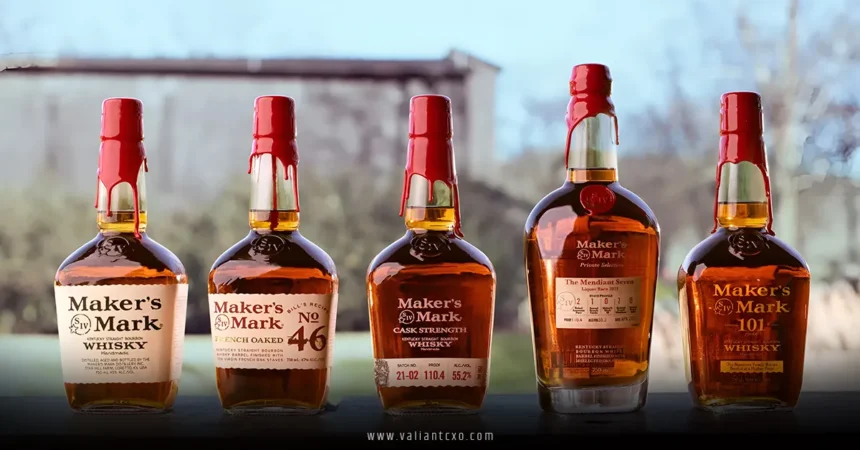Kentucky whiskey bankruptcies have sent shockwaves through the heart of America’s bourbon industry, a $9 billion economic powerhouse that’s long been a source of pride for the Bluegrass State. Imagine a once-thriving distillery, its barrels aging gracefully in rickhouses, now facing the grim reality of financial ruin. What’s causing this turmoil in Kentucky’s signature industry? Why are distilleries, some with deep roots and others newly built, filing for Chapter 11? Let’s dive into the complex world of Kentucky whiskey bankruptcies, exploring the causes, impacts, and what the future holds for this iconic spirit.
The Bourbon Boom: A Golden Era for Kentucky Whiskey
For decades, Kentucky’s bourbon industry was riding high. The early 2000s marked the start of a bourbon boom, where global demand for the sweet, oak-aged spirit skyrocketed. Distilleries couldn’t keep up, filling millions of barrels annually—3.2 million in 2023 alone! Bourbon tourism flourished, with 2.5 million visitors flocking to Kentucky’s distilleries in 2024, boosting local economies. Jobs multiplied, supporting over 23,000 workers with a $1.6 billion payroll. It was a golden era, like a perfectly aged barrel of bourbon—rich, smooth, and full of promise.
But like any good party, the bourbon boom couldn’t last forever. The industry’s rapid expansion led to overproduction, and now, Kentucky whiskey bankruptcies are signaling a sobering reality check. So, what went wrong?
Overproduction: Too Much Whiskey, Not Enough Buyers
Picture a distillery as a baker churning out loaves of bread. If you bake too much and the shelves are already full, what happens? The bread goes stale, and you’re left with waste. That’s exactly what happened in Kentucky’s whiskey industry. Distilleries, caught up in the boom, overproduced, filling rickhouses with barrels that now sit unsold. The market became saturated, and demand began to wane. In 2024, American whiskey sales dropped 1.8% to $5.2 billion, a stark contrast to the growth of previous years. This oversupply is a key driver behind Kentucky whiskey bankruptcies, as distilleries struggle to turn inventory into revenue.
Shifting Consumer Tastes: A New Generation’s Preferences
Have you noticed how trends change? One day, everyone’s sipping bourbon neat; the next, they’re reaching for canned cocktails or non-alcoholic drinks. Younger consumers, particularly Gen Z, are shifting away from whiskey, favoring lighter, ready-to-drink options. This pivot has hit Kentucky’s distilleries hard. It’s like trying to sell vinyl records in the age of streaming—some folks still love the classics, but the masses are moving on. This shift in consumer behavior is a significant factor in Kentucky whiskey bankruptcies, as distilleries grapple with declining domestic demand.
The Distilleries Hit Hard by Kentucky Whiskey Bankruptcies
Several distilleries have become poster children for Kentucky whiskey bankruptcies, each with its own story of ambition, investment, and financial distress. Let’s meet the players caught in this storm.
Garrard County Distilling: A $250 Million Dream in Receivership
Garrard County Distilling, a shiny new $250 million facility in Lancaster, Kentucky, opened in January 2024 with big dreams. It aimed to produce bourbon for its own All Nations brand and contract distill for others. But behind the scenes, trouble brewed. By April 2024, the distillery was in receivership, owing Truist Bank nearly $27 million. Operations ceased, and 60 workers were furloughed indefinitely. It’s like building a mansion only to find you can’t pay the mortgage—heartbreaking and humbling.
Luca Mariano Distillery: A Family Legacy Falters
Luca Mariano Distillery in Danville, Kentucky, is another casualty of Kentucky whiskey bankruptcies. Founded by Francesco Viola, who turned a garage hobby into a 553-acre distillery, Luca Mariano held its grand opening in June 2025. Just weeks later, it filed for Chapter 11 bankruptcy, facing $34.5 million in debts, including $25 million to Summit Investment. Viola’s vision was to honor his grandfather’s legacy, but mounting liens and a Boyle County lawsuit pushed the distillery to the brink. Can a family dream survive such financial strain?
Kentucky Owl and Stoli Group: A Premium Brand’s Fall
Kentucky Owl, a premium bourbon brand revived in 2014 by Dixon Dedman, was acquired by Stoli Group in 2017 with plans for a $150 million Kentucky Owl Park in Bardstown. The vision included pyramid-shaped distilleries and a luxury hotel, but progress stalled. In November 2024, Stoli Group USA and Kentucky Owl filed for Chapter 11, citing $50–100 million in liabilities. A cyberattack and declining spirits demand didn’t help. It’s like betting big on a racehorse that never makes it to the track—Kentucky whiskey bankruptcies have claimed another high-profile victim.
Economic Ripples: The Impact of Kentucky Whiskey Bankruptcies
Kentucky whiskey bankruptcies aren’t just about distilleries; they’re shaking the entire state’s economy. The bourbon industry isn’t a lone cowboy—it’s a web of interconnected businesses, from grain farmers to cooperages to tourism. When distilleries falter, the ripple effects are profound.
Job Losses and Community Impact
Imagine a small town where the distillery is the lifeblood. When it shutters, the impact is devastating. Garrard County Distilling’s closure left 60 workers in limbo, while Green River Distilling cut 26 jobs—25% of its workforce. Brown-Forman, the parent of Jack Daniel’s, slashed 700 jobs in January 2025, closing a Louisville barrel-making plant. These layoffs hit hard, especially for workers with specialized skills that don’t easily translate to other industries. Communities lose not just jobs but also the economic activity they generate, from local diners to retail shops.
Tourism and Supply Chain Disruptions
Bourbon tourism, which brought in 2.5 million visitors in 2024, is a major driver of Kentucky’s economy. But Kentucky whiskey bankruptcies threaten this golden goose. Fewer operating distilleries mean fewer tours, tastings, and festivals, hurting hotels, restaurants, and local businesses. The supply chain feels the pinch too. Grain farmers, who sold 21 million bushels to distilleries, face reduced demand. Cooperages, which craft the barrels essential for aging bourbon, see orders dry up. It’s like a domino effect—one distillery’s failure topples others in the ecosystem.
The Tariff Threat: Export Markets in Jeopardy
International markets have been a lifeline for Kentucky’s bourbon industry, but tariffs loom like storm clouds. In 2025, new 15% tariffs on European imports raised fears of retaliatory tariffs on American whiskey. Export markets, already squeezed, could shrink further, exacerbating Kentucky whiskey bankruptcies. It’s like trying to sell your best bottle to a buyer who’s suddenly slapped with extra taxes—good luck making the sale.
Why Are Kentucky Whiskey Bankruptcies Happening?
The causes of Kentucky whiskey bankruptcies are like ingredients in a bad cocktail—each one potent, and together, disastrous. Let’s break it down.
Economic Pressures: Inflation and Rising Costs
Inflation has driven up the cost of everything from grain to barrels to labor. Distilleries, especially smaller ones, struggle to absorb these costs without passing them on to consumers. But with demand softening, price hikes aren’t an option. It’s like being caught between a rock and a hard place—spend more to produce, or lose customers by raising prices.
Corporate and Private Equity Missteps
Many distilleries caught in Kentucky whiskey bankruptcies were backed by private equity or corporate owners who overextended themselves. Garrard County’s parent, Staghorn, invested $250 million but couldn’t service its debts. Stoli Group’s ambitious plans for Kentucky Owl Park fizzled amid financial woes and a cyberattack. It’s like betting your life savings on a single stock—risky, and often regrettable.
Market Saturation and Declining Demand
The bourbon boom led to a flood of new brands, from craft distilleries to established players. But with 14.3 million barrels aging in Kentucky—more than two per resident—the market is oversaturated. Consumers, spoiled for choice, are turning to alternatives, leaving distilleries with excess inventory and dwindling sales. Kentucky whiskey bankruptcies are the fallout of this supply-demand mismatch.
Can the Industry Recover from Kentucky Whiskey Bankruptcies?
Is there hope for Kentucky’s bourbon industry, or is this the end of an era? Some distilleries are fighting back, using Chapter 11 to reorganize and stay afloat. Let’s explore the potential paths forward.
Restructuring and Reinvention
Chapter 11 bankruptcy offers a lifeline, allowing distilleries to restructure debts and operations. Westward Whiskey’s CEO, Thomas Mooney, called their filing “an opportunity to reinvent ourselves.” Luca Mariano’s Francesco Viola echoed this, aiming to “maximize value for stakeholders.” It’s like hitting the reset button—painful but potentially transformative.
Diversifying Offerings
Some distilleries are pivoting to meet changing consumer tastes. Ready-to-drink cocktails and non-alcoholic options could capture younger audiences. Others are focusing on premium, limited-edition releases to maintain cachet. It’s like a chef tweaking the menu to keep diners coming back—adapt or perish.
Building Resilience Through Community
Kentucky’s bourbon industry has a secret weapon: its tight-knit community. From the Kentucky Distillers’ Association to local advocates, there’s a push to support struggling distilleries. Collaborative efforts, like shared production or marketing, could help smaller players survive. It’s like neighbors banding together after a storm—together, they’re stronger.
The Future of Kentucky’s Bourbon Industry
Kentucky whiskey bankruptcies are a wake-up call, but they don’t spell doom. The industry’s resilience, built on centuries of tradition, suggests it can weather this storm. By addressing overproduction, adapting to new consumer trends, and navigating economic challenges, Kentucky’s distilleries can find their footing. The bourbon boom may be over, but the spirit of Kentucky whiskey—grit, craftsmanship, and community—lives on.
Conclusion: A Sobering Moment, But Not the End
Kentucky whiskey bankruptcies have cast a shadow over an industry that’s long been a source of pride and prosperity. From overproduction to shifting consumer tastes to economic pressures, the challenges are real. But like a good bourbon, Kentucky’s whiskey industry has depth and character, capable of enduring tough times. By restructuring, innovating, and leaning on community support, distilleries can emerge stronger. So, raise a glass to resilience—Kentucky’s bourbon story is far from over. What’s next for this iconic industry? Only time, and perhaps a few well-aged barrels, will tell.
FAQs About Kentucky Whiskey Bankruptcies
1. What are Kentucky whiskey bankruptcies, and why are they happening?
Kentucky whiskey bankruptcies refer to distilleries in Kentucky filing for Chapter 11 or entering receivership due to financial distress. Causes include overproduction, declining demand, inflation, and tariff threats.
2. Which distilleries are affected by Kentucky whiskey bankruptcies?
Notable distilleries include Garrard County Distilling ($27 million in debt), Luca Mariano Distillery ($34.5 million in debt), and Kentucky Owl with Stoli Group ($50–100 million in liabilities).
3. How do Kentucky whiskey bankruptcies impact local communities?
These bankruptcies lead to job losses, reduced tourism, and supply chain disruptions, affecting workers, local businesses, and industries like farming and cooperages.
4. Can distilleries recover from Kentucky whiskey bankruptcies?
Yes, through Chapter 11 restructuring, diversifying products, and community support, distilleries can reorganize and adapt to market changes, as seen with Westward Whiskey’s optimistic approach.
5. How can consumers support the industry amid Kentucky whiskey bankruptcies?
Consumers can visit distilleries, buy local bourbon, and support brands through tourism and purchases. Check out Bourbon Trail for ways to engage!
For More Updates !! : valiantcxo.com


